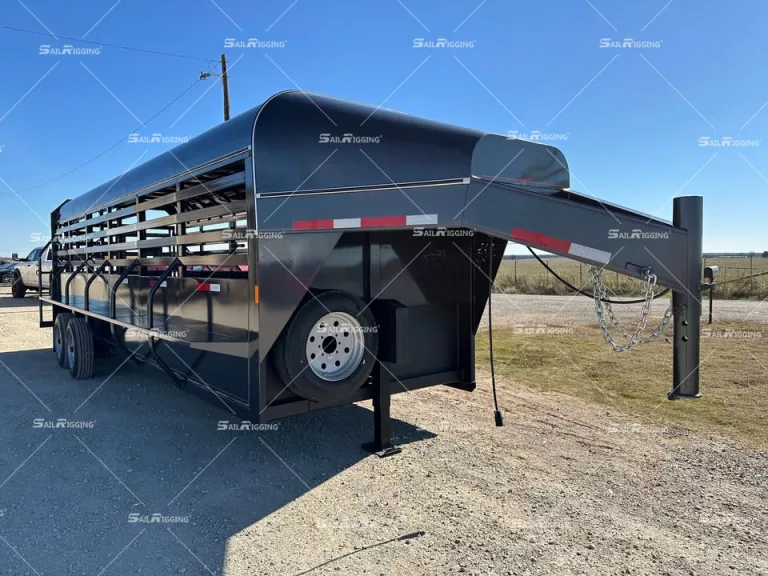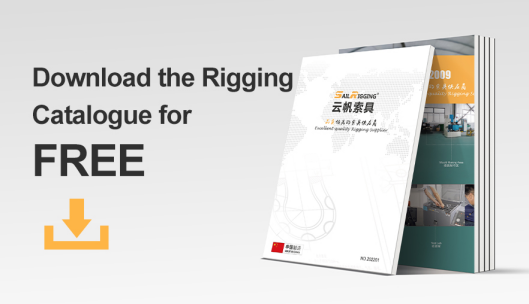Safety chains play a vital role in ensuring the safe and secure transportation of trailers, preventing accidents and ensuring compliance with safety regulations. One important standard for safety chains in the United States is SAE J684, which provides guidelines for the performance, design, and testing of safety chains used in towing applications. This standard is essential for manufacturers, distributors, and end-users who want to ensure that their safety chains meet high safety and performance standards.
In this article, we’ll explain the SAE J684 standard, its importance, and how it impacts the design and use of safety chains in towing applications.
What Is SAE J684?
SAE J684 is a standard set by the Society of Automotive Engineers (SAE). It specifically addresses the requirements for safety chains used in towing trailers. The standard outlines the minimum design, material, and testing requirements for safety chains to ensure they can withstand the forces exerted during towing and provide effective protection in case of a trailer disconnection from the tow vehicle.
The main objective of SAE J684 is to ensure that safety chains are durable, reliable, and capable of preventing accidents in the event of trailer detachment. These chains act as a secondary restraint system, preventing a runaway trailer, which could otherwise cause significant damage or injury.
Key Requirements of SAE J684
The SAE J684 standard specifies several key aspects regarding the design and use of safety chains:
- Material Strength and Durability
The safety chains must be made from high-strength materials that are durable and resistant to wear, corrosion, and fatigue. The standard typically recommends using materials such as steel, stainless steel, or alloy steel for manufacturing these chains. These materials must be capable of withstanding the stress of towing and the forces exerted during a trailer disconnection.
- Chain Design
SAE J684 specifies the design requirements for safety chains, which include:
Chain Diameter: The chain must have sufficient thickness and strength to handle the weight and force of the trailer.
Link Strength: The individual links of the safety chain must be of adequate strength to support the load and prevent failure during towing.
Connection Points: Safety chains must feature secure and reliable connection points, ensuring that the chain is attached properly to both the tow vehicle and the trailer. These connection points must be designed to prevent accidental detachment.
- Testing and Performance
One of the most important aspects of SAE J684 is the emphasis on performance testing. According to the standard, safety chains must undergo rigorous testing to verify that they meet the required strength and performance levels. Some key testing procedures include:
Tensile Testing: Chains are subjected to tensile tests to ensure they can withstand the maximum forces expected during towing.
Fatigue Testing: The chains are tested for durability under repeated loading and unloading to ensure they can handle the stresses of continuous use.
Impact Testing: The chains are also tested for their ability to absorb shock loads that can occur during sudden trailer detachment.
These tests help ensure that safety chains are capable of performing effectively in real-world towing conditions.
- Proper Sizing
The SAE J684 standard requires that safety chains be appropriately sized for the Gross Trailer Weight (GTW) they are intended to support. This means that the chains used for different trailer sizes and weight capacities should have appropriate strength ratings. Manufacturers must ensure that the safety chains are capable of supporting the maximum load that the trailer may carry.
Importance of SAE J684 for Safety and Compliance
The SAE J684 standard is crucial for the safety of both the trailer operator and other road users. By adhering to this standard, manufacturers and operators can ensure that safety chains provide adequate protection in case of a trailer separation. The standard helps prevent dangerous situations that could occur when a trailer becomes disconnected from its tow vehicle, such as:
Runaway trailers: Safety chains prevent trailers from rolling freely if the hitch or connection fails.
Road Hazards: A detached trailer can cause a significant hazard on the road, leading to accidents or collisions. Proper safety chains reduce the risk of such incidents.
Damage to the Trailer and Tow Vehicle: If the safety chain is not strong enough, it may not be able to stop a runaway trailer, leading to damage to both the trailer and the towing vehicle.
In addition to enhancing safety, SAE J684 ensures compliance with legal requirements for trailer towing. In many jurisdictions, regulations require that safety chains meet specific standards, and SAE J684 serves as a benchmark for compliance. Operators and manufacturers who adhere to the standard are more likely to avoid legal issues and fines related to trailer safety.
How SAE J684 Impacts Safety Chain Selection
When choosing safety chains for towing applications, it’s essential to consider SAE J684 as a key guideline. Here’s how it impacts the selection process:
- Choosing the Right Size and Strength
Based on the weight and capacity of the trailer, operators should select safety chains that comply with SAE J684 requirements. The standard provides detailed specifications on the strength and size of the chains, ensuring that the selected chains are appropriate for the towing operation.
- Ensuring Quality and Durability
By purchasing safety chains that meet SAE J684, operators can be confident that they are using high-quality, durable products that will last through frequent use and adverse conditions. It’s important to check for certification marks or labels indicating compliance with SAE J684 when purchasing safety chains.
- Preventing Failures and Accidents
Using safety chains that meet SAE J684 standards significantly reduces the risk of chain failure during towing. This is critical for maintaining control of the trailer and preventing accidents caused by trailer disconnection.
SAE J684 is an essential standard for safety chains used in towing operations, providing guidelines to ensure the strength, durability, and performance of these critical components. By adhering to the requirements set forth in this standard, manufacturers and operators can ensure that their safety chains are reliable, compliant, and capable of protecting against the risks associated with trailer detachment. Whether you’re transporting equipment, vehicles, or cargo, choosing the right safety chains that meet SAE J684 is crucial for both safety and compliance on the road. If you have any question about SAE J684 safety chain, don’t hesitate to let us know.





